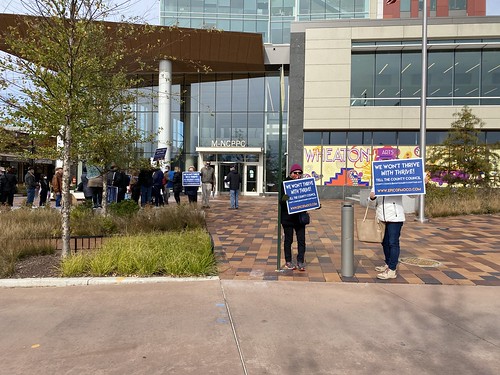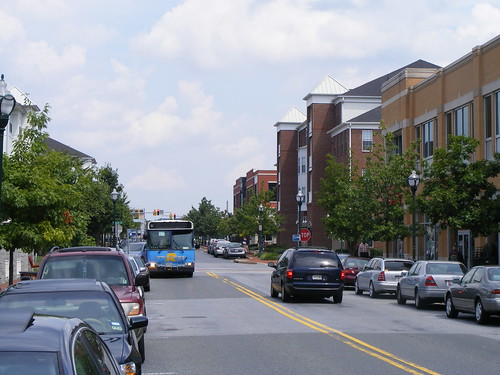Montgomery County has a housing shortage, particularly for lower-priced homes. The median home price is now $500,000, 14% more than last year. Inside the Beltway and near the Red Line, prices can be significantly higher as people compete for a limited supply of houses.
 |
| Montgomery County wants to make it easier to build “missing middle” homes, like this triplex in Silver Spring. All photos by the author. |
That’s happening in part because of single-family zoning, which was created in the early 20th century to keep Black people out of white and affluent neighborhoods by making townhomes and apartments illegal. This policy — along with racial covenants and redlining — still contributes to segregation today, but it also makes housing more expensive and inaccessible for everyone. That’s why places from Minneapolis to Sacramento are opening up their single-family zones.
In December, County Councilmember Will Jawando introduced a bill, ZTA 20-07, that would allow duplexes, townhomes, and small apartment buildings on “R-60” lots within one mile of Red Line stations. If passed, the bill would change planning permissions for about 24,000 lots where today you can only build one house and an accessory apartment.
“We must have an all hands on deck approach that includes multiple solutions” to address the housing shortage, he wrote in a letter to the County Council.
Montgomery County has a goal to build 41,000 homes by 2030 to meet the shortage. The Planning Department is already working on its own plans to create more “missing middle” homes, including one focused on downtown Silver Spring that could involve zoning changes and Thrive 2050, which looks at the entire county and will not involve any zoning changes. Both of these efforts will play out over the next several months, with many opportunities for public input.
Hurry up, or wait
So now there’s a debate: pass Jawando’s bill and allow more homes today, or take our time and potentially allow more homes in the near future?




















